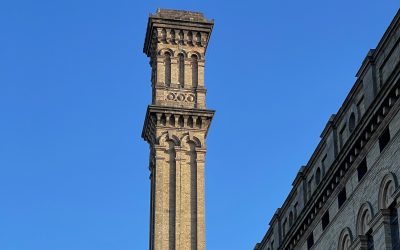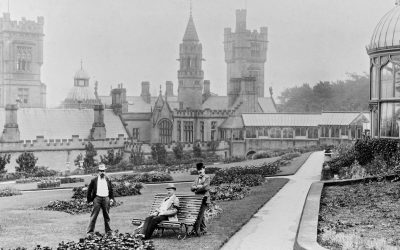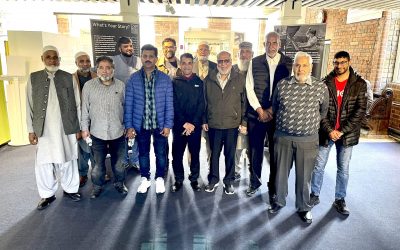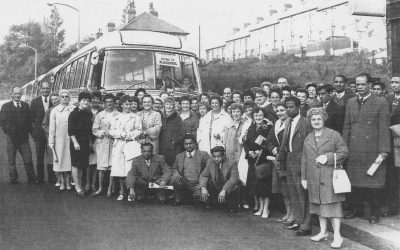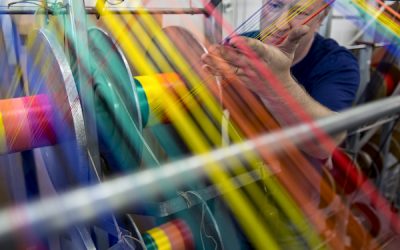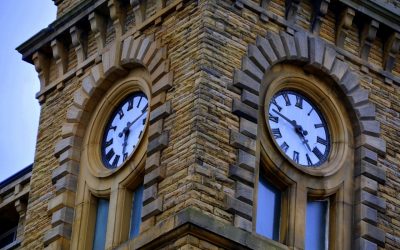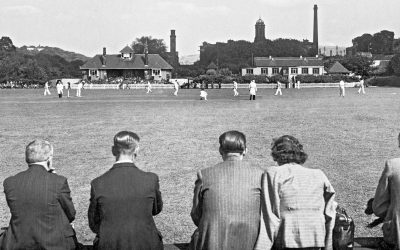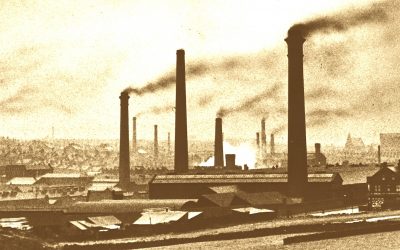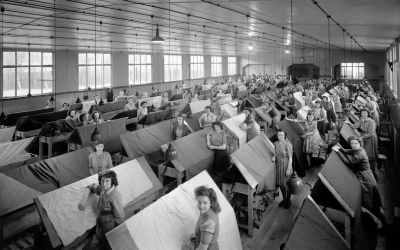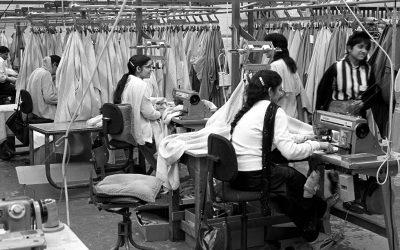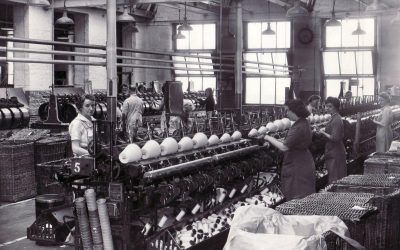Northern Broadside did theatre productions in the derelict parts of the mill. When I was in there, I was thinking, ‘I wonder if this is the room where my grandad worked?’
At a Glance
The 1970s was a time of Abba and Ford Cortinas, flares and long hair and Bradford was still a major textile producer. There were hundreds of mills across the district and they produced everything from fine worsted suit material to flock for wallpaper and fabric for funeral gloves.
Since 1970, most of Bradford’s mills have closed. Some have been pulled down and others tragically burnt down. Many historic mill buildings still remain and some have become offices, factories and apartments. Others stand derelict, waiting for a new lease of life. A small number are still in business, keeping Bradford’s textile industry alive.
Thousands of people worked in the mills doing all kinds of jobs. There were designers and doffers, weavers and washers, menders and spinners, drivers and managers, sales people and spinners. Many millworkers were new arrivals from Pakistan, India, Bangladesh and Eastern Europe. They came and found jobs in a complex supply chain producing fabrics used all over the world. They all had interesting and different stories to tell and we have put together a selection of soundbites for you to explore on this site.
The Importance of Bradford’s Woollen Industry
Paul Mear | Transcript
Multiple Generations in Bradford’s Wool Trade
Dan Lee | Transcript
We have visited communities and individuals across the Bradford District to record their textile memories. You can find most of them on this website. Some are hilarious, some are serious and some are plain incredible. Over 80 hours of recordings tell stories of the working day, skills that were learnt and lifelong friendships that were made. There are stories of romance, accidents, arguments, industrial disputes, food and fun, laughter and tears. Together they show the human side of working life in Bradford.
Who We Are
509 Arts is based in Shipley, Bradford and we work with communities to tell their stories. We have created plays, operas and exhibitions about many things, including car love, climate change and cycling stories to the devastating floods of 2015, memorable landscapes and growing old in Bradford.
Lost Mills and Ghost Mansions was made in partnership with Bradford Community Broadcasting and you can find the radio programmes that we made together here [hyperlink]. The project was funded by Bradford Council, the National Lottery Heritage Fund and the Arts Council.
The Layout of Knowle Mill
Christopher Ackroyd | Transcript
Northern Broadside did theatre productions in the derelict parts of the mill. When I was in there, I was thinking, ‘I wonder if this is the room where my grandad worked?’
Lost Mills
Ghost Mansions
Archive
The Archive of Lost Mills & Ghost Mansions Lorem ipsum dolor sit amet, consectetur adipiscing elit, sed do eiusmod tempor incididunt ut labore et dolore magna aliqua. Lost MillsGhost Mansions
Ghost Mansions Case Studies
Photo: Bradford Museums and Galleries Cliffe Castle, Keighley, view from the Flower Garden with Signor Eugster de la Deheza, Ricardo Vines and Henry Isaac Butterfield (seated) c. 1890 I know that Robert Clough - he had a big mansion,...
Do It Yourself
Sangat Centre at Bradford Industrial Museum Photography by Alan Dix I think what people should do is show an interest in local history because one day (and I hope this never happens) there won’t be people like you, and there won’t be people like me, who have a...
Mediawall
Photo by unknown IPLost Mills & Ghost Mansions media wallLorem ipsum dolor sit amet, consectetur adipiscing elit, sed do eiusmod tempor incididunt ut labore et dolore magna aliqua. Ut enim ad minim veniam, quis nostrud exercitation...
Textiles Today
Laxtons have been making worsted and fancy yarns in Yorkshire since they were founded in 1907. After moving much of their manufacturing overseas during the late C20th, they recently brought it all back to the UK with the opening of a state-of-the-art new...
Changing Ways
Photos by: I could see at that time that the mills were starting to close around Keighley all over the town and I thought ‘I need to be moving on somewhere’ and that's when I left in 1975 and joined the fire service. Automation Lorem ipsum dolor sit amet, consectetur...
Time Off
[In] Saltaire there were lots and lots of foreign people. There were hundreds from Germany, Switzerland, and Italy, like me. Everyone there, in the hostel I stayed in, kept saying, ‘How do you grow spaghetti in Italy?’. So I made it up! We went to [the] shop. We...
Local Area Studies and Map
I grew up next to Marriner’s and I actually watched it burn down. It would have been in the ‘70s. I was in my grandma's house when the fire started ‘cos she lived round the corner. And I watched it burn down stood next to Dr Who off the telly at the time. Which was...
Rights & Wrongs
In the 1970’s, unions demanded an increase of 15-20% in salaries and in 1974 the salaries went up from £20-25 to £70-75. In 1979, Thatcher got rid of the unions. She said higher salaries were causing inflation and that the maximum wage increase could be 5%. I got a...
Diverse workforce
The supervisors were white, whilst the machinists were Asians: Pakistani, Bengali and Indians. All very friendly. People looked out for each other and helped new ones get settled. This has changed. AD: How many people worked there? LM: 80-100 I should think, ‘cause...
Working life
Spinning Lorem ipsum dolor sit amet, consectetur adipiscing elit, sed do eiusmod tempor incididunt ut labore et dolore magna aliqua. Ut enim ad minim veniam, quis nostrud exercitation ullamco laboris nisi ut aliquip ex ea commodo consequat. "Lorem ipsum dolor...
Wordsmithery winning scripts
Winning scripts We have four Wordsmithery winning scripts! There was a high level of submissions from across Bradford and the quality and range of writing styles was fascinating to read. The winners are: The Crack by Sarah Goodyear Not So Smart-Whips by Tahir...






